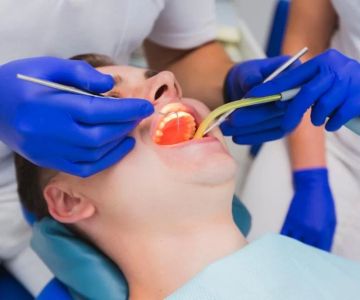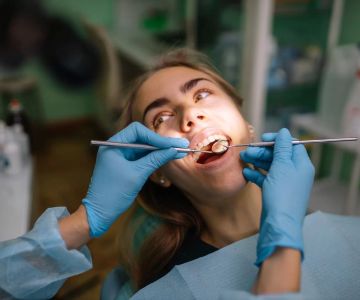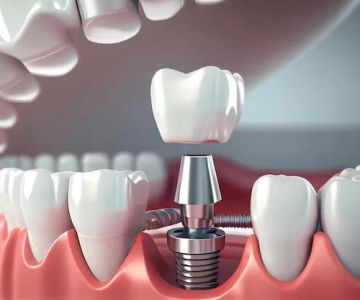How to Repair Cracked Teeth with Dental Restoration: Effective Treatment Options
- 1. Understanding Cracked Teeth
- 2. Causes of Cracked Teeth
- 3. Treatment Options for Cracked Teeth
- 4. Dental Crowns for Cracked Teeth
- 5. Veneers and Bonding for Cracked Teeth
- 6. When to Seek Dental Care for Cracked Teeth
1. Understanding Cracked Teeth
Cracked teeth are a common dental issue that can occur due to a variety of reasons, including trauma, grinding, or age-related wear. When a tooth cracks, it can lead to discomfort, sensitivity, and even tooth loss if not properly treated. Fortunately, modern dental restoration techniques offer a variety of solutions to restore cracked teeth, depending on the severity and location of the crack.
Cracks in teeth can vary from small, hairline fractures to deep cracks that penetrate the tooth enamel. Understanding the type of crack and its potential effects on your oral health is crucial in determining the best treatment approach.
2. Causes of Cracked Teeth
There are several reasons why teeth crack, and understanding these causes can help you take preventive measures. Some common causes of cracked teeth include:
- Trauma or Injury: Accidents, falls, or direct blows to the mouth can lead to cracks in the teeth.
- Bruxism (Teeth Grinding): Habitual teeth grinding, especially during sleep, can cause stress fractures in teeth.
- Age: As we age, our teeth naturally become more brittle and may develop cracks over time.
- Large Fillings: Teeth that have large fillings may be more prone to cracking, as the tooth structure becomes weaker.
- Chewing Hard Foods: Biting down on hard substances, like ice or hard candy, can crack teeth.
By identifying the cause of your cracked tooth, you can better prevent future issues and take the necessary steps to repair the damage.
3. Treatment Options for Cracked Teeth
There are several treatment options available for repairing cracked teeth, depending on the severity of the crack. Some options are more conservative, while others are more extensive:
- Dental Bonding: For minor cracks or chips, dental bonding is a quick and affordable solution. The dentist applies a tooth-colored resin to the crack, which hardens and restores the tooth's appearance and function.
- Dental Crowns: For more significant cracks, a dental crown may be needed. The crown covers the entire tooth, providing strength and protection. Crowns are ideal for cracked teeth that have weakened over time.
- Veneers: Veneers are thin, custom-made shells that cover the front surface of the tooth. They are ideal for cracked or discolored teeth, restoring both appearance and function.
- Root Canal Therapy: In cases where the crack extends into the pulp of the tooth, a root canal may be necessary to remove infected tissue and save the tooth.
- Tooth Extraction: In severe cases where the crack compromises the tooth's structure beyond repair, extraction may be necessary, followed by a dental implant or bridge to restore the smile.
Your dentist will assess the severity of the crack and recommend the best course of treatment based on your individual needs.
4. Dental Crowns for Cracked Teeth
Dental crowns are one of the most common and effective treatments for cracked teeth. A crown is a custom-made cap that fits over the cracked tooth, providing both strength and aesthetic appeal. Crowns are typically made from durable materials such as porcelain, metal, or a combination of both. They can restore the function of the tooth and prevent further cracking or damage.
Dental crowns are particularly useful for cracks that affect the tooth's structure but not its pulp. They can protect the tooth from additional wear and prevent pain caused by sensitivity. The process typically involves two dental visits: one to prepare the tooth and take impressions, and another to place the crown after it is custom-made.
5. Veneers and Bonding for Cracked Teeth
If the crack is located on the surface of the tooth or only affects the enamel, dental bonding or veneers might be the best treatment options. Both techniques can enhance the appearance of the tooth while providing strength and durability.
- Dental Bonding: Bonding is a minimally invasive treatment that involves applying a tooth-colored resin to the cracked area. The resin is shaped to match the natural contours of the tooth and then hardened using a special light. This is a quick and cost-effective solution for minor cracks.
- Veneers: Veneers are ideal for improving the appearance of cracked teeth, especially for those who are concerned about the aesthetic aspect. Veneers cover the front of the tooth and can correct both cracks and discoloration.
Both of these options offer a less invasive approach than crowns and are often used for cosmetic improvements. However, they may not be suitable for more severe cracks that compromise the tooth's structure.
6. When to Seek Dental Care for Cracked Teeth
It’s important to seek dental care as soon as you notice any signs of a cracked tooth, especially if you experience pain, sensitivity, or discomfort. Early intervention can prevent further damage and increase the chances of successfully repairing the tooth.
If you suspect you have a cracked tooth, don't hesitate to consult a dentist who specializes in dental restoration. They will be able to assess the extent of the crack and recommend the best treatment plan for your situation. For more information or to schedule a consultation, visit Dentistry Toothtruth and get expert advice on cracked tooth repair options.







 Charles Hunter DMD: Idaho Falls Dental Group0.0 (0 review)
Charles Hunter DMD: Idaho Falls Dental Group0.0 (0 review) Community Health Center of Snohomish County - Everett-North Clinic4.0 (960 review)
Community Health Center of Snohomish County - Everett-North Clinic4.0 (960 review) Children's Dentistry of Trappe4.0 (491 review)
Children's Dentistry of Trappe4.0 (491 review) Reardon Dental4.0 (557 review)
Reardon Dental4.0 (557 review) Tascha Z. Fuchs, DDS5.0 (63 review)
Tascha Z. Fuchs, DDS5.0 (63 review) Holbert Family Orthodontics5.0 (467 review)
Holbert Family Orthodontics5.0 (467 review) The Importance of Oral Health Education During Pregnancy for a Healthy Pregnancy
The Importance of Oral Health Education During Pregnancy for a Healthy Pregnancy Best Tips for Brushing Your Teeth Properly for Healthy Gums: Essential Techniques for Oral Health
Best Tips for Brushing Your Teeth Properly for Healthy Gums: Essential Techniques for Oral Health Why Skipping Dental Checkups Can Lead to Bigger Oral Health Problems
Why Skipping Dental Checkups Can Lead to Bigger Oral Health Problems Advantages of Porcelain Dental Restorations
Advantages of Porcelain Dental Restorations How Can Diabetes Cause Tooth and Gum Problems? Preventing and Managing Oral Health Issues
How Can Diabetes Cause Tooth and Gum Problems? Preventing and Managing Oral Health Issues Healthy Habits for Promoting Good Oral Health and Hygiene: Tips for a Healthy Smile
Healthy Habits for Promoting Good Oral Health and Hygiene: Tips for a Healthy Smile